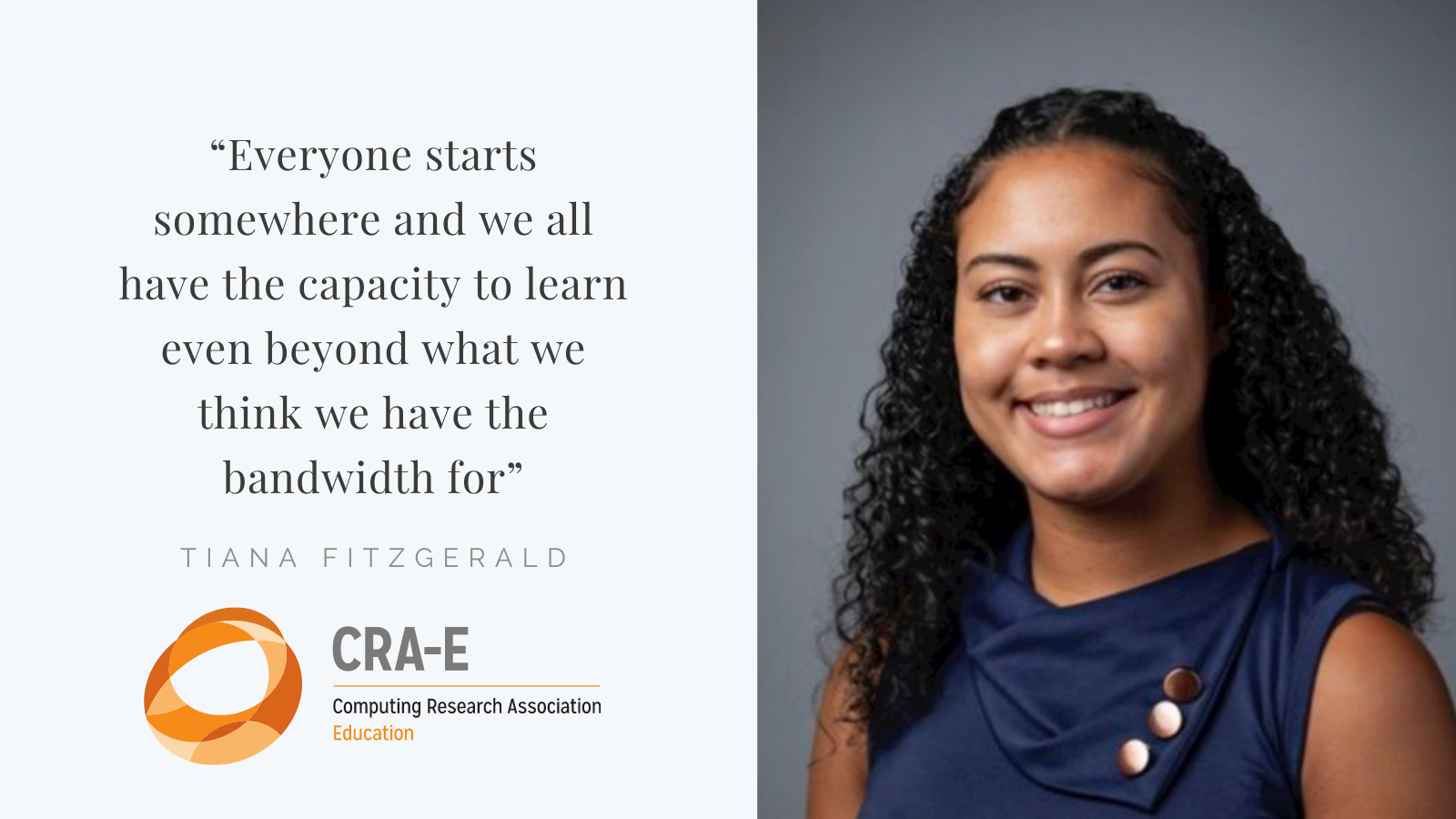CRA-E’s Undergraduate Research Highlights: Undergraduate at the Intersection of Computing and Biology – research uncovering associations in cell data
CRA-E’s “Undergraduate Research Highlights” series showcases outstanding research done by undergraduate students at universities and colleges across North America. Each article features the story of a successful undergraduate researcher and offers personal insights into their experiences with finding an advisor, undertaking new research projects, and discovering how research can impact their personal and professional future. It is one of a number of CRA-E’s activities that foster and recognize talented computing researchers with the goal of increasing the research pipeline, promoting graduate education, and advocating research-based careers.
In addition to helping students understand the process of getting involved in research, the articles also serve as a venue for students to pass along advice to others who aspire to become involved in research themselves. Students selected for the research highlights include those receiving recognition in the CRA Outstanding Undergraduate Researcher Award competition. This series is written and edited by CRA-E Graduate Fellows.
Undergraduate at the Intersection of Computing and Biology: Research Uncovering Associations in Cell Data
Tiana Fitzgerald, B.A. in Computer Science, minor in Statistics and Machine Learning, Princeton University
This Q&A highlight features Tiana Fitzgerald, an Honorable Mention in the 2022 CRA Outstanding Undergraduate Researchers award program. Tiana graduated from Princeton University and is now an Engineering Analyst at Goldman Sachs. This interview has been edited for length and clarity.

How did you find your research opportunity and hone in on a project?
I got lucky! I shared with my family that I planned to look for research opportunities, and my uncle got me in touch with an old colleague of his who teaches at another university. This colleague then introduced me to Professor Barbara Engelhardt. I had originally hoped to pursue opportunities in biochemistry, but taking a Computer Science (CS) course in my freshman year of college changed my interests. Prof. Engelhardt’s research was at the intersection of CS and biology. I did some research on projects her lab was working on and came to her with an idea of what directions I would like to pursue if she had anything available. Prof. Engelhardt is full of ideas, so it didn’t take long for her to think of something I could work on. She was kind enough to offer me a job as a research assistant in her lab my sophomore year. Once she introduced me to grad student Andy Jones, the project took off.
Can you tell us about your project?
We wanted to develop a statistical modeling approach that would capture associations in high-dimensional data by producing a low-dimensional representation. In other words, the model should help us recognize interesting features in complex data by creating a simplified representation.
Each cell in our bodies contains information that determines every aspect of how we look and operate. The study of this information has led to breakthroughs in the detection, treatment, and prevention of diseases. Advanced technologies now produce data at the individual-cell level. This data is complex and difficult for traditional approaches to handle. We sought to develop a solution that would illuminate interesting associations in these complex new datasets to contribute to the advancement of the field.
Our statistical model handles the complexity of new datasets and produces representations that are easier to interpret. The model can illuminate important associations in data, such as trends in gene expression among cells. A paper detailing this work was recently published in BMC Bioinformatics.
What challenges did you encounter when first getting started in research?
Prof. Engelhardt’s research was advanced for the level of knowledge I had in statistics, machine learning, and CS in general, so I felt a bit out of my depth to start. I learned to start from the ground up and build a foundation for my knowledge when beginning a difficult project. I began reading papers that were relevant to the problem. Then I attempted to implement simpler versions of the model we had in mind. Over time, I gained confidence and was able to build more complex models.
What were some of your favorite aspects of research?
Conducting research allowed me to dive into new topics rather than simply scratch the surface. This project opened my eyes to a lot of concepts in the world of biology, machine learning, and statistics all at once. I learned that everyone starts somewhere and we all have the capacity to learn beyond what we think we have the bandwidth for.
How has participating in research shaped your professional path?
I was wary of majoring in CS. I assumed that everyone had been coding since middle school, and I would never be able to catch up. Participating in research taught me that I actually do have a place in this field and showed me what I was capable of learning and achieving.
Do you have any advice for other students looking to get into research?
Do it! Ask upperclassmen with research experience if they would recommend working with specific professors. Ask professors whose classes you loved if they have any opportunities. Especially if you are interested in pursuing academia, undergrad research is a great opportunity to get a taste of what research in academia looks like.
— Edited by Nadia Ady and Yasra Chandio








